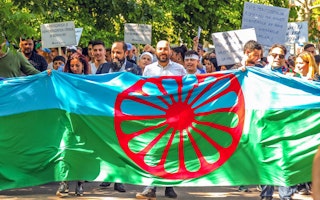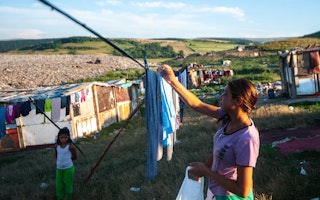Q&A: A Step Toward Justice for Roma Women

The Slovak government in November adopted a resolution apologizing to Roma women for a long-running program of forced sterilizations. The Open Society Foundations’ Herta Toth spoke with Vanda Durbakova, who runs Poradna—a rights organization in the Slovak Republic—about the resolution and what it means for Roma rights.
Tell us about the government’s program of sterilization. Who did it target? Why? And how long did it run?
This was a government-sanctioned population control program created during the Communist regime to “reduce the highly unhealthy” Roma population. The underlying causes were discriminatory. It was, at heart, informed by a wider world view that sees Roma people not as people, but rather as a problem that needs to be managed.
The official program began in 1966. But the practice continued in other forms long after the Communist government was ousted in 1989. The last procedures that we know of were carried out against Roma women in 2004.
How many women were subjected to these procedures?
No thorough investigation has ever been conducted, so there is no reliable data. Our small organization, the Center for Civil and Human Rights (Poradna), together with the Center for Reproductive Rights, documented 140 cases in 40 Roma marginalized communities, but the total number is much higher. Many women feel ashamed to talk about what happened to them, and others never understood why they are unable to get pregnant.
The stories these women tell are difficult to hear. For instance, one of the women, Ingrid, explained that she went into the operating room for a C-section and was sterilized without her consent. She only learned about the sterilization years later.
Why did the program of forced sterilization end in 2004?
New legislation was adopted in 2004 after we documented the practice of forced sterilization of Roma women in a report entitled Body and Soul: Forced Sterilizations and Other Assaults on the Reproductive Rights of the Roma in Slovakia. Thanks to pressure from Roma women survivors, international human rights bodies and our advocacy, the government passed legislation to ensure that women are only sterilized if they provide full and informed consent.
However, our work continued as the government failed to recognize state responsibility for the rights violations. Some of the Roma women, including Ingrid, won cases at the European Court of Human Rights and in Slovak courts with support from Poradna.

Poradna was working on this very closely with Roma women activists for years. How did you keep going for so many years?
It was clear to us from the start that Roma women harmed by these practices must play a central role in the struggle for justice. Too often, the Roma from marginalized communities are treated as those who need to be “saved” or “protected.” For us, they are key partners and activists, not just “victims.”
As activists, the women understood that legal procedures could take years. They were willing to invest a lot of time and energy, yet it was sometimes difficult to keep the faith over a period of nearly 20 years. Positive court decisions, the growing community of Roma women, and international support was helpful. But most of all, the conviction that such injustice should not happen to anyone else, gave power to the activists. Ingrid, Veronika, and others have been fighting not just for themselves but for their daughters, communities, and for the equality of Roma people.
So what does the recent government resolution do? Is more action needed?
It is a significant step towards justice. For the first time, the government accepts its responsibility for this shameful practice.
Going forward, we are hopeful that it will set a new level with respect to attitudes and behaviors towards Roma people. Across Europe, Roma face extraordinary levels of discrimination. This action may help re-enforce the message that this hate is unwarranted, unlawful, and destructive.
At the same time, this is only a first step. The government must follow up with crucial and much-needed action. It must compensate all victims. While no amount of money can remedy the suffering caused, adequate compensation is required by international law, and would help alleviate the suffering of the victims. It would also re-enforce the message that the government is willing now to appropriately and fully address this painful chapter in its history in a way that is fair to the women that were abused.
Is there a precedent for this sort of compensation?
The Czech Republic followed a similar path, formally apologizing to Roma women for its sterilization program in 2009 and providing compensation in July, 2021. We believe it is critical for justice to be served for the Slovak government to follow through, and not just apologize.
Similarly, other countries—including Sweden, Switzerland, and Norway—have come to terms with poor practices of their governments in the past, including the forced sterilization of ethnic minorities, and women living with disabilities.
We know which way the path towards justice points. The question now is: will the Slovak government travel the full distance?
Center for Civil and Human Rights Poradna is a grantee of the Open Society Foundations.


